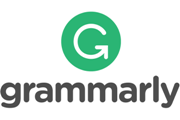UPAYA MENINGKATKAN AKTIVITAS BELAJAR DAN KEMAMPUAN MEMBACA SISWA MELALUI TEKNIK PERMAINAN BAHASA MELENGKAPI CERITA
Keywords:
Learning activities, Reading Ability, Language Game TechniqueAbstract
This study aims (1) to find out the activities of Grade 2 students at SDN Kananga when participating in learning to read using language games techniques. (2) Knowing the learning outcomes of class 2 students at SDN Kananga after participating in learning to read using language game techniques. This type of research is classroom action research carried out in two cycles. As for each cycle carried out four stages namely planning, implementation of action, observation, and reflection.
Based on the results of data analysis it is known that: (1) Student learning activities regarding activeness in the initial data achieved a score of 66.1%; cycle 1 achieved a score of 68.5; and cycle 2 achieved a score of 78.2%. This means that there is an increase from the initial data to cycle 1 of 2.4%; cycle 1 to cycle 2 of 9.7%. Student attention to the initial data achieved a score of 51.6%; cycle 1 achieved a score of 58.1; and cycle 2 achieved a score of 75.8%. This means that there is an increase from the initial data to cycle 1 of 6.5%; cycle 1 to cycle 2 of 17.7%. Meanwhile, the initial data responsibility achieved a score of 55.6%; cycle 1 achieved a score of 64.5; and cycle 2 achieved a score of 72.6%. This means that there is an increase from the initial data to cycle 1 of 8.9%; cycle 1 to cycle 2 of 8.1%. (2) Almost half of the students' reading ability (32.3%) met the KKM initial conditions, most of the first cycle (54.8%) fulfilled the KKM, and the second cycle most (74.2%) fulfilled the KKM. meaning that there was an increase from the initial conditions to cycle 1 of 22.5% and from cycle 1 to cycle 2 of 19.4%.
Based on the results of the research, it can be proven that the use of story-complementary language games techniques can improve learning activities and reading skills of class II students of SD Negeri Kananga, Jatinangor District, Sumedang Regency. Thus the hypothesis that the researcher proposed can be accepted.
References
Arikunto, Dkk. (2015). Penelitian Tindakan Kelas. Jakarta: Bumi Aksara.
Arsyad, A. (2015). Media Pembelajaran. Jakarta: Rajawali Pers.
Daryanto. (2010). Media Pembelajaran Peranannya Sangat Penting dalam Mencapai Tujuan Prmbelajaran. Yogyakarta: Gava Media.
Depdikbud. (2013). Kamus Besar Bahasa Indonesia. Jakarta; Depdikbud.
Depdiknas. (2013). Kurikulum Tingkat Satuan Pendidikan. Jakarta: Depdiknas.
Diniati & Khotimah. (2009). Penelitian Tindakan Kelas. Bandung: Yrama Media.
Gintings, A. (2012) Esensi Praktis Belajar & Pembelajaran. Bandung: Humaniora.
Hidayat, K., Yasir, B., Undang, M. (2012). Strategi Belajar Mengajar Bahasa Indonesia. Bandung: Binacipta.
Karwapi. (2016). Pengajaran bahasa Indonesia di SD Petunjuk Mengajarkan Membaca Menulis Permulaan Tanpa Buku. Bandung: Angkasa.
M. K. Akhadiah. (2012). Bahasa Indonersia 1. Jakarta: Depdikbud.
Mulyati, Y. (2012). Membaca dan Pembelajarannya. Bandung: UPI
Purwanto, N. & Alim, D. (2012). Metodologi Pengajaran Bahasa Indonesia di Sekolah Dasar. Jakarta: PT Rosda Jayaputra.
Sanjaya, W. (2013). Perencanaan & Desain Sistem Pembelajaran. Jakarta: Kencana.
Slameto. (2010). Belajar dan Faktor-faktor yang Mempengaruhinya. Jakarta: Rineka Cipta.
Sudjana, N. (2012). Tuntunan Penyusunan Karya Ilmiah. Bandung: Sinar Baru.
Surakhmad, W. (2012). Pengantar Penelitian Ilmiah. Bandung: Tarsito.
Downloads
Published
How to Cite
Issue
Section
License
Copyright (c) 2023 Sebelas April Elementary Education

This work is licensed under a Creative Commons Attribution-NonCommercial-ShareAlike 4.0 International License.








